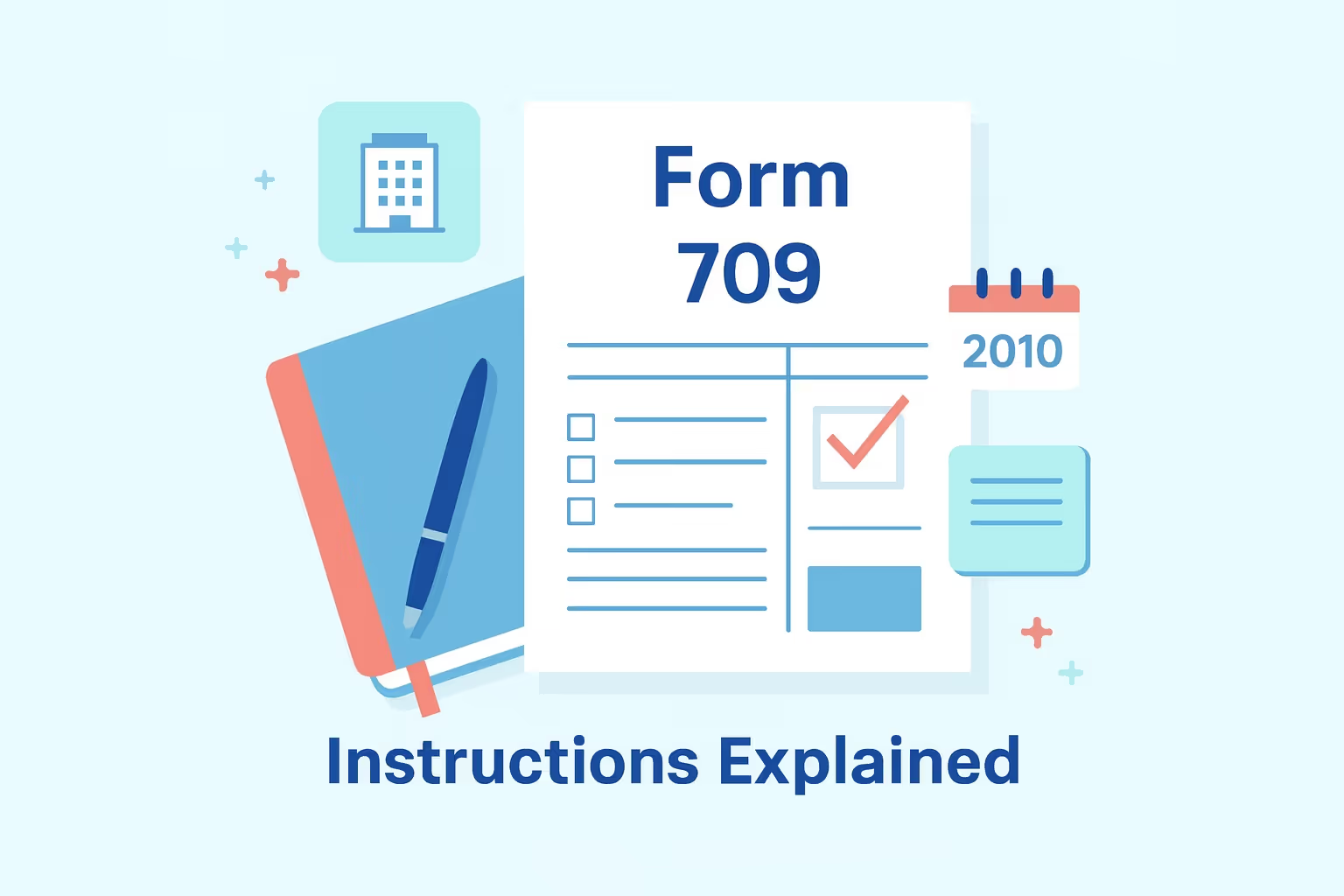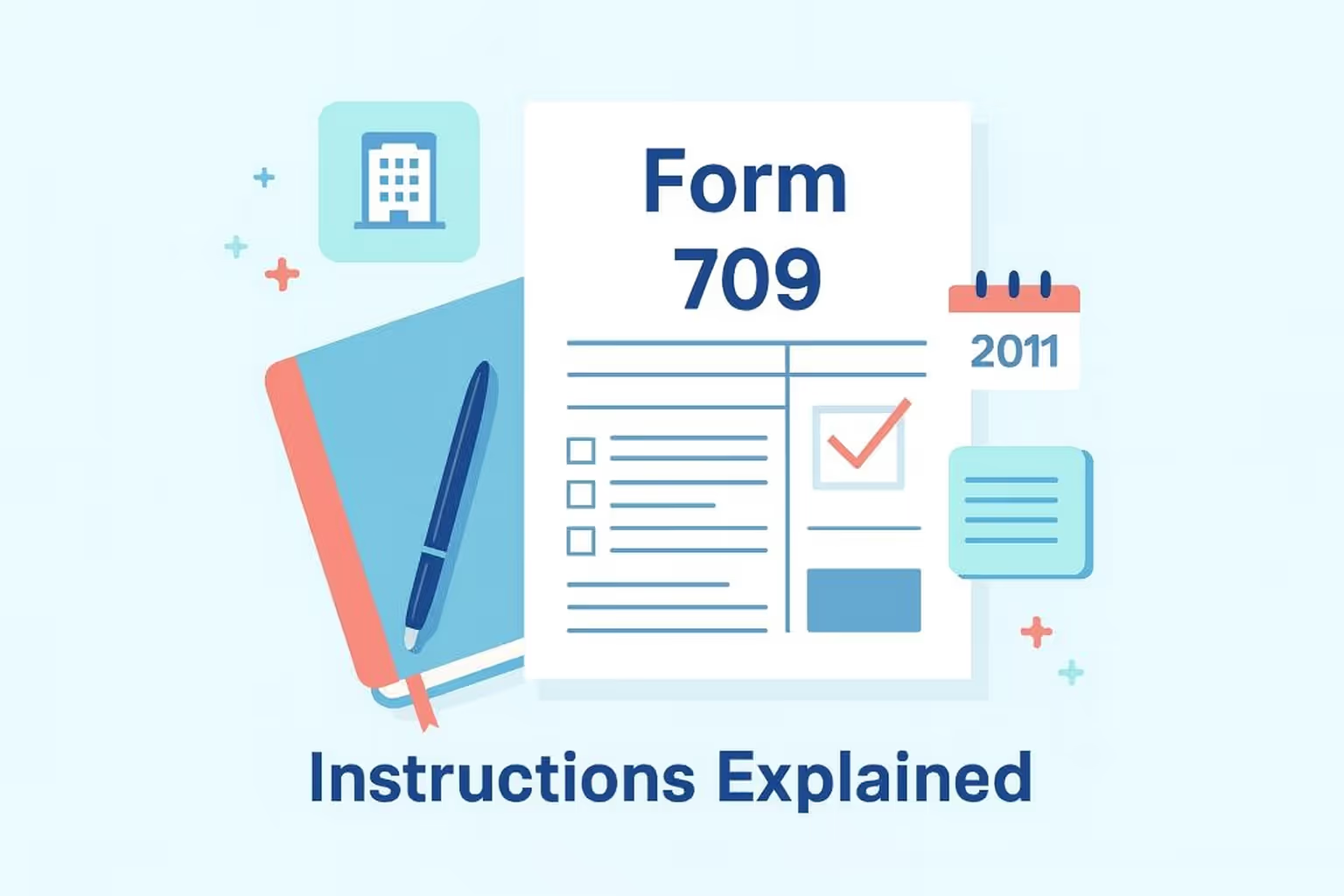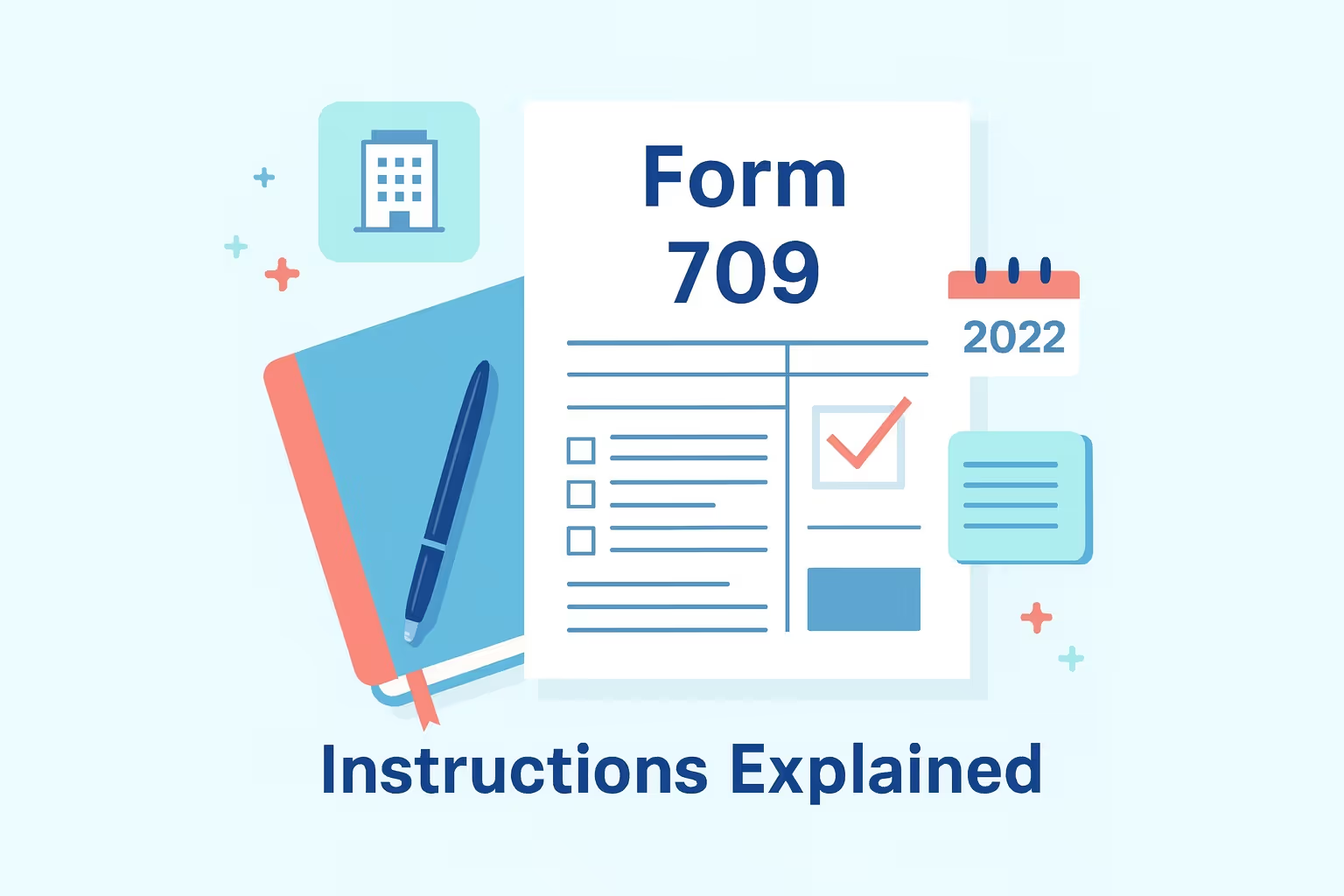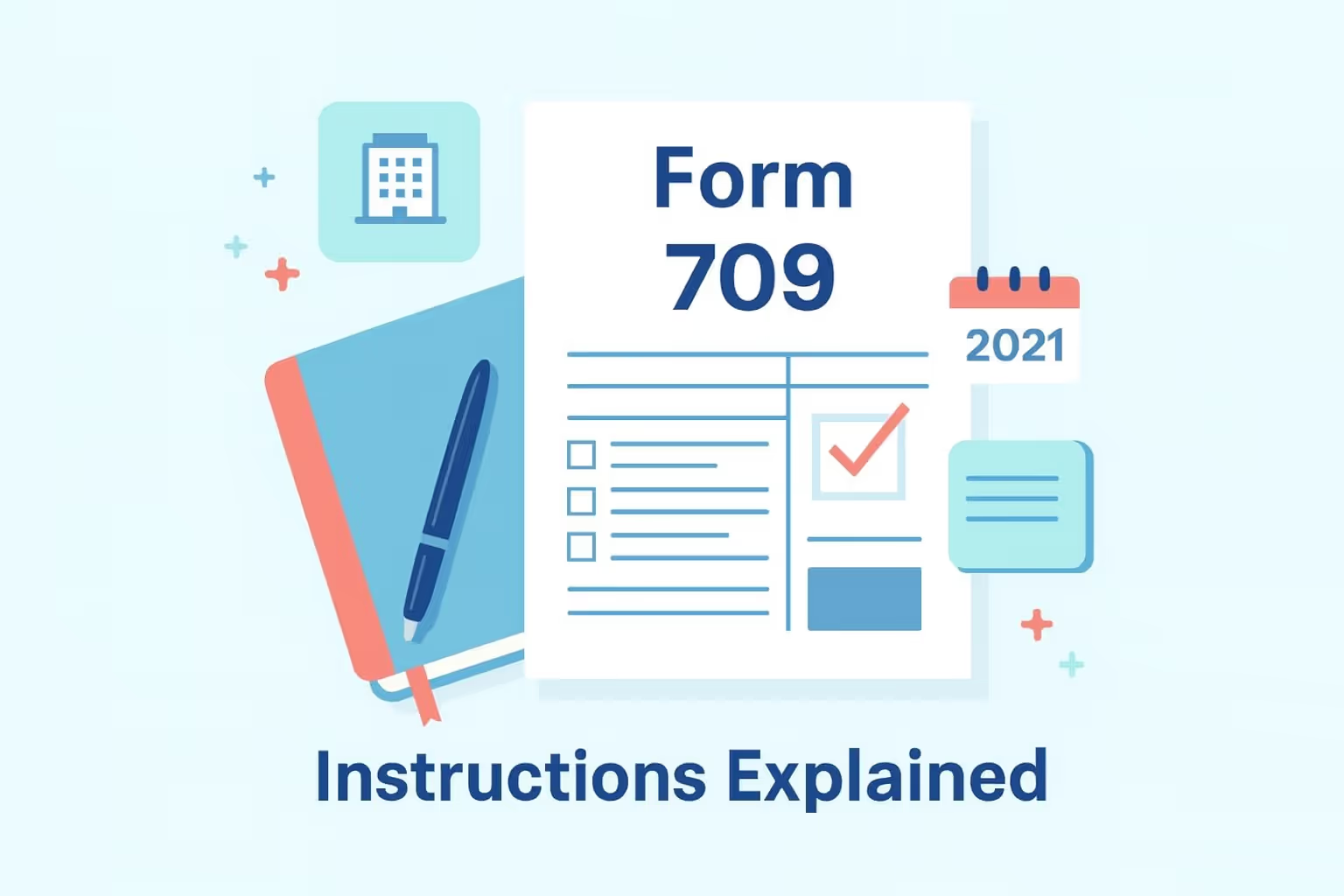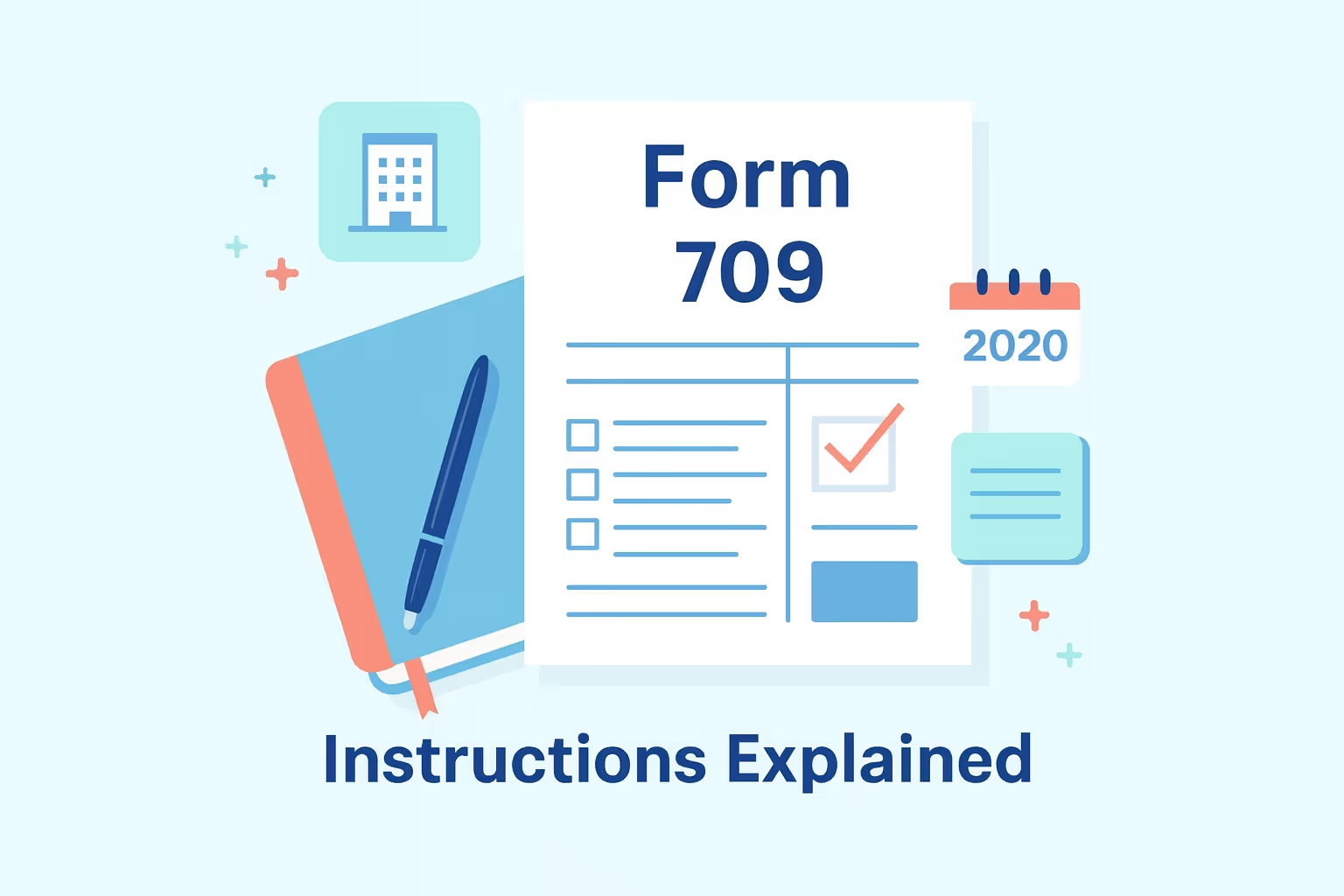Form 706 reports a decedent’s estate to the Internal Revenue Service for federal estate tax purposes in 2013. Executors use this federal form to document the date of death values and calculate estate tax liability. The filing window is nine months from the decedent’s date of death, with an extension available by request. This guide speaks plainly and guides you in organizing records during the estate administration process.
We explain how to determine the taxable estate, account for adjusted taxable gifts, and apply the applicable exclusion amount. You will see where lifetime gifts and deductions fit, and how a surviving spouse may claim portability. We also outline assets owned that typically appear on the return, including real estate, bank accounts, and tangible personal property. Careful records ensure consistent entries across schedules, reducing confusion for everyone involved.
Use the official IRS Form 706 (2013 revision) to ensure you file the proper 2013 version. The IRS PDF shows the federal form layout, required schedules, and signature areas. As you prepare documents, gather statements from each financial institution and note any assets that may require a third-party appraisal. The following section defines who must file, explains filing triggers tied to total value, and outlines key decisions.
Understanding Federal Estate Tax and Who Must File
Executors must understand how the federal estate tax applies before completing any part of Form 706. The Internal Revenue Code defines what counts toward a decedent’s taxable estate, including the total value of all assets owned, lifetime gifts, and adjusted taxable gifts.
Anyone managing a decedent’s estate must carefully review each category of property to determine whether a return is required and how to calculate the potential estate tax liability. The filing obligation depends on the applicable exclusion amount and specific circumstances, including those involving the surviving spouse, portability elections, and state estate tax returns.
Who Must File Under the Internal Revenue Code
- Estates exceeding the 2013 applicable exclusion amount must file Form 706, even if no tax is due after deductions. Executors calculate the total value of the decedent’s assets and any taxable gifts made during their lifetime.
- Executors of estates below the exclusion threshold may still need to file to elect portability for a surviving spouse, ensuring that unused exclusion transfers are properly transferred.
- Executors managing estates with property subject to state estate tax returns must meet both federal and state filing requirements.
- Estates with assets outside the United States or held by a non-resident decedent require detailed valuation records to confirm federal reporting obligations.
What to Include When Evaluating Filing Requirements
- Combine real estate, tangible personal property, and financial institution accounts to capture the full value of the estate.
- Add lifetime gifts and adjusted taxable gifts to confirm whether the combined amount meets or exceeds the applicable exclusion.
- Identify deductions that reduce the taxable base, such as qualifying charitable bequests or debts that remain unpaid at the decedent’s death.
- Confirm ownership interests in family businesses and personal property to ensure accurate reporting.
- Review each transaction near the date of death to determine whether additional income or accrued interest affects the estate’s final calculation.
Executors who determine that the estate meets the filing thresholds should prepare the documentation early. Organizing valuations, account statements, and legal records ensures accuracy in estate reporting to the Internal Revenue Service. Establishing clear records before completing the return also helps streamline coordination with tax professionals.
Estate Plan and Executor Responsibilities
Executors play a central role in ensuring the decedent’s estate is administered in full compliance with federal estate tax rules. Their duties begin with understanding the estate plan, identifying all assets owned, and confirming the values of those assets that contribute to the total taxable estate. Each responsibility requires careful documentation and clear communication with beneficiaries, advisors, and financial institutions to maintain accurate management and oversight. Proper planning at this stage supports accurate reporting and reduces the likelihood of future disputes or delays.
Proving Authority and Organizing Documents
Executors must establish legal authority through court-issued letters or a certified copy of the will. These records allow access to financial accounts, real estate files, and other holdings within the decedent’s estate. The executor should obtain the death certificate, property deeds, and statements from each financial institution.
For estates that include family businesses or high-value real estate, hiring a third-party appraiser ensures consistent valuations across schedules. Maintaining organized records strengthens transparency and helps identify which assets form part of the taxable estate. Executors can refer to IRS Publication 559, "Survivors, Executors, and Administrators," for guidance on fulfilling administrative duties and documenting transactions.
Coordinating with the Estate Plan
The estate plan outlines how property transfers occur and identifies beneficiaries entitled to inherit specific assets. Executors must confirm that asset distributions align with the plan’s provisions and the applicable exclusion amount.
They should review instructions covering tangible personal property, bank accounts, and investment portfolios to verify ownership and beneficiary designations. Coordination with legal counsel ensures that the estate plan’s directives align with current tax laws and Internal Revenue Code requirements. Addressing these elements early allows timely preparation for filing Form 706.
Communication with Beneficiaries and Professionals
Executors serve as the primary point of contact for heirs, advisors, and the Internal Revenue Service. They should keep beneficiaries informed about progress and clarify the treatment of lifetime gifts, real estate, and deductions. Collaboration with accountants or enrolled agents helps identify any outstanding income tax returns or liabilities that impact overall estate tax liability. Open communication promotes trust and reduces misunderstandings, which can delay settlement or filing deadlines.
A detailed and proactive approach enables executors to manage their responsibilities efficiently. Gathering accurate valuations, reviewing the estate plan, and maintaining complete documentation ensures compliance with every calculation reported on the federal form. The following section explains how valuation rules define estate tax purposes and how fair market value affects the final estate tax calculation.
Estate Tax Purposes: Valuation Rules and Fair Market Value
Accurate valuation establishes the foundation for determining the estate tax liability under federal law. Executors must calculate the fair market value of all assets owned as of the decedent’s date of death to comply with the Internal Revenue Code. Fair market value represents the price a willing buyer and seller would agree upon when both have reasonable knowledge of the property.
Correct valuations clarify the total taxable estate, support consistent reporting across schedules, and safeguard the estate from disagreements during examination. Executors confirm through comprehensive documentation that each figure aligns with the estate’s economic reality and fulfills estate tax purposes.
- Valuation Requirements and Methods: Executors must document the total value of every category of property included in the decedent’s estate. Assets typically include real estate, family businesses, bank accounts, checking accounts, and tangible personal property. Some properties, such as closely held companies or unique artwork, require a third-party appraiser to ensure impartiality.
Financial institution statements should display balances as of the date of death, while personal property values rely on credible market data. Proper evidence for each entry protects beneficiaries and maintains transparency throughout the estate administration process. Maintaining uniform valuation techniques across all asset classes allows the Internal Revenue Service to verify reported totals efficiently.
- Elections Affecting Valuation: Executors may select from specific valuation elections designed to reflect the estate’s actual financial condition. Executors may use alternate valuation under Section 2032 to recalculate values six months after death if it decreases both the gross estate and resulting estate tax liability. Special-use valuation under Section 2032A applies when qualifying property remains in continuous operation for agricultural or family business purposes.
Executors must comply with ownership and operational tests for each election, which must reduce the gross estate’s taxable value. Choosing the correct election demands reviewing the applicable exclusion amount, deductions, and impact on total tax liability. Accurate application of these provisions may offer relief without jeopardizing compliance.
Reliable valuations provide confidence when determining deductions, computing applicable exclusion amounts, and finalizing estate tax payments. Executors who compile consistent evidence, verify figures, and document methodology can demonstrate good faith and accuracy during review. Strong valuation practices reduce risk, promote clarity, and prepare the executor to complete the next stage of Form 706.
Step-by-Step Form 706 Filing Instructions
Filing Form 706 requires careful organization and adherence to the Internal Revenue Code provisions for estate tax reporting. Executors must follow each stage methodically to confirm the taxable estate, determine the estate tax liability, and ensure that all values and deductions are accurately documented. The process integrates data from financial institution records, property appraisals, and prior gift reporting to calculate total value. Using a structured approach helps executors maintain consistency and meet the nine-month deadline for filing.
Access the IRS Instructions for Form 706 (2013) for official guidance on completing each section and schedule. This resource outlines reporting standards for assets owned, lifetime gifts, and deductions claimed, ensuring compliance with 2013 requirements.
Step 1: Gather Required Documentation
Executors must collect certified copies of the death certificate, will, and court appointment documents. Include statements for bank accounts, investment holdings, and retirement assets. Secure appraisals for real estate, tangible personal property, and family businesses from a qualified third-party appraiser. Confirm that all documents reflect values as of the decedent’s date of death.
Step 2: Complete Part 1 – Decedent and Executor Information
Provide identifying details for both parties, including names, addresses, and taxpayer identification numbers. List the decedent’s date of death, domicile, and marital status. Verify all entries align with supporting legal records to prevent processing delays.
Step 3: Calculate the Gross Estate in Part 2
Record the total value of all assets owned, including real estate, bank accounts, tangible personal property, and lifetime gifts. Ensure each asset category corresponds with its appropriate schedule. Add adjusted taxable gifts to determine whether the combined figure exceeds the applicable exclusion amount.
Step 4: Elect Valuation and Deductions
Evaluate eligibility for alternate valuation or special-use valuation to reflect fair market conditions. Apply deductions for debts, charitable contributions, and administration expenses that reduce the taxable base. Review deduction schedules carefully to confirm accuracy before finalizing totals.
Step 5: Apply Credits and Determine Estate Tax Liability
After calculating the taxable estate, enter credits such as prior gift tax paid. Compute the final estate tax payment and verify that all figures reconcile with the schedule summaries.
Step 6: Review and Sign the Return
Executors must verify and confirm that all calculations are accurate and that each schedule is attached correctly. The executor must sign the federal form under penalties of perjury, certifying that the return is complete and correct.
Following each stage precisely ensures compliance and transparency in reporting to the Internal Revenue Service. A systematic approach promotes clarity and positions the executor to address payment arrangements effectively in the next section. Maintaining a documented workflow also supports smoother correspondence if the IRS requests clarification during review.
Extension of Time to File and Estate Tax Payment Methods
Executors may request additional time when the estate requires more preparation before submission or payment. The Internal Revenue Service allows an extension of time for filing Form 706 or paying the related estate tax liability.
Understanding how to apply for an extension, make estimated payments, and choose the proper method for estate tax payment ensures compliance and prevents unnecessary interest charges. Each option requires careful planning and documentation that reflects the decedent’s financial position as of the date of death.
- Extension of Time to File: Executors can apply for a six-month extension using Form 4768 when additional time is needed to finalize valuations, gather appraisals, or reconcile deductions. Filing this request before the original nine-month deadline protects the estate’s filing status. The extension grants more time to complete schedules and confirm totals, but does not delay payment obligations. Executors should retain confirmation of timely submission as part of the estate’s records.
- Extension of Time to Pay: When liquidity issues exist, such as limited cash or illiquid assets, executors may request an extension to pay the estate tax liability. Executors must demonstrate reasonable cause and show that payment within the original period would cause undue hardship to receive approval. The Internal Revenue Service may request detailed statements explaining the composition of assets and the anticipated sources of funds.
- Estimated Payment: Executors who cannot finalize valuations before the deadline should remit an estimated payment based on the best available data. Paying an estimated amount limits additional interest accrual and ensures partial compliance while appraisals are pending. Adjustments occur once the return is filed and accurate figures are confirmed.
- Installment Options for Family Businesses: Estates containing closely held or family businesses may qualify for Section 6166 installment payments. This election allows for the gradual payment of the estate tax over time, particularly when business assets represent a significant portion of the taxable estate. Executors must satisfy ownership and value thresholds to qualify and must meet all filing conditions on the original return.
Selecting the appropriate approach protects the estate’s financial position and ensures continued compliance with federal requirements. Documenting every request, estimated payment, and correspondence supports transparency and demonstrates due diligence during the review process. Properly managing extensions and payments reduces administrative stress, allowing executors to focus on other aspects of estate administration efficiently.
Common Mistakes and Audit Red Flags
Accurate preparation of Form 706 prevents delays, additional inquiries, and potential assessments. Executors must pay attention to every schedule, valuation, and attachment to maintain consistency and compliance with the Internal Revenue Code.
Executors often make errors when documentation is missing, calculations are inaccurate, or requirements linked to the decedent’s date of death are overlooked. Identifying potential audit triggers in advance enables executors to resolve discrepancies before submission, ensuring that the estate tax liability accurately reflects the values.
Common filing mistakes involve omissions or incorrect data that affect the total taxable estate or reduce transparency in estate administration. Each inaccuracy increases the workload and may prompt the Internal Revenue Service to request supporting documentation. Maintaining organized records, double-checking figures, and verifying asset ownership details provide essential safeguards during the preparation process.
- Incomplete or Missing Documentation: Missing death certificates, unfiled Form 712 for life insurance, or uncertified copies of the will frequently delay processing. Executors should confirm that all mandatory forms, court documents, and certifications accompany the federal form to support reported valuations.
- Incorrect Valuations: Discrepancies in property values, especially for real estate or family businesses, can trigger a review. Executors should ensure that third-party appraisers use consistent fair market standards reflecting the property’s actual condition as of the decedent’s date of death.
- Miscalculated Adjusted Taxable Gifts: Overlooking prior lifetime gifts or entering inaccurate totals distorts the taxable estate. Review gift tax returns and reconcile figures against financial institution statements and the decedent’s records.
- Omitted Deductions or Debts: Executors may forget deductible expenses such as administrative fees, charitable contributions, or outstanding liabilities. Recording each deduction with proper substantiation avoids unnecessary increases in the estate tax payment.
- Unreconciled Totals Across Schedules: Totals must match across all schedules and summary pages. Any mismatch between the gross estate, deductions, and applicable exclusion amount can raise questions during audit review.
Thorough preparation and precise documentation reinforce the executor’s credibility and streamline the examination if the Internal Revenue Service requests clarification. Implementing a rigorous review process before mailing ensures that all schedules, attachments, and valuations align with reported figures. Diligent verification promotes transparency, reduces stress during administration, and facilitates the efficient conclusion of estate matters.
Bank Accounts and Financial Institution Records for Form 706
Executors must compile detailed statements from each financial institution to document balances and ownership at the decedent’s date of death. Bank accounts, certificates of deposit, and investment portfolios often represent significant portions of the taxable estate. Ensuring accurate reconciliation across schedules prevents discrepancies that could delay processing or trigger further review. Transparent reporting of account ownership, titling, and beneficiary designations strengthens compliance with the Internal Revenue Code.
Collecting Statements from Each Financial Institution
- Obtain complete statements reflecting balances on the exact date of death for checking accounts, savings accounts, and money market accounts.
- Request written confirmation for accrued interest to align income entries with the final income tax return.
- Include documentation for foreign accounts and ensure currency conversions reflect official exchange rates.
- Maintain records for each institution’s branch or account officer for correspondence purposes.
Ownership and Titling for Married Couples
- Identify whether the account is held jointly, individually, or as community property to determine inclusion in the gross estate.
- For jointly owned accounts between a married couple, report only the decedent’s proportional interest based on contribution history.
- Review survivorship rights and document beneficiary designations that transfer property automatically to the surviving spouse.
- Provide supporting evidence, such as deposit records or prior statements, verifying ownership percentages.
Reconciling Assets Owned with Schedules
- Match every account balance to Schedule C, which reports mortgages, notes, and cash equivalents.
- Include temporary accounts opened for estate administration to reflect the total value accurately.
- Verify that trust accounts and custodial funds appear under the correct ownership structure and schedule.
- Maintain consistency between balances shown in financial statements and entries on the federal form.
Tracking Income, Interest, and Transfers
- Report all income and interest credited after death that remain unpaid at the time of filing.
- Note transfers between accounts to prevent duplicate reporting or omissions in total value.
- Document withdrawals are used to substantiate deductions claimed elsewhere on the return for estate expenses.
Meticulous recordkeeping of every account balance and transaction ensures accuracy throughout the estate administration process. Executors who reconcile financial data before completing Form 706 support transparent valuations and reduce complications during Internal Revenue Service review.
Frequently Asked Questions
What is the purpose of filing an inheritance tax return using IRS Form 706?
An inheritance tax return using IRS Form 706 reports the total value of the decedent’s estate, determines the taxable estate, and calculates any federal estate tax due. Executors file the return to comply with federal law and document transfers of property following a loved one's passing. Completing the form ensures proper estate administration, accurate calculation of the exemption, and transparent reporting of all assets distributed to beneficiaries.
Who must file an inheritance tax return for decedents dying in 2013?
Executors must file an inheritance tax return for decedents dying in 2013 if the total estate value, including adjusted taxable gifts, exceeds the applicable exclusion amount. Even when the estate qualifies for the exemption, filing may still be necessary to transfer any unused exclusion to a surviving spouse. Timely filing supports compliance, enables accurate tax calculation, and preserves portability for future estate planning.
How does the exemption affect the estate’s tax calculation?
The exemption reduces the portion of the estate subject to federal taxation. Executors determine the total value of all assets, subtract allowable deductions, and apply the exemption to calculate the remaining taxable amount. Estates with values below the exclusion limit may owe no federal tax; however, they must still complete an inheritance tax return if portability is elected or specific estate administration requirements apply under the Internal Revenue Code.
When is the inheritance tax return due for a 2013 decedent?
The due date for filing the inheritance tax return is nine months after the decedent’s date of death. Executors may request an extension of time to file if additional documentation or valuations are required. Filing within this period ensures compliance with federal rules and the timely completion of estate administration. Any estate tax owed must be paid by the original deadline to avoid interest charges.
Can an executor file the inheritance tax return electronically?
Executors cannot file the 2013 inheritance tax return electronically. The Internal Revenue Service required paper filing for IRS Form 706 for that calendar year. Returns must be mailed to the designated service center with all supporting documentation and schedules. Executors should ensure that entries are accurate, original signatures are present, and attachments are organized to avoid delays in processing or requests for additional information during the estate administration process.
How do lifetime gifts affect an estate’s taxable value?
Lifetime gifts reduce the available exemption by applying prior transfers against the overall exclusion. Executors must include adjusted taxable gifts when calculating the gross estate to determine whether the threshold for filing is met. Proper reporting of gifts ensures accurate assessment of the inheritance tax liability and consistent application of tax rules across the decedent’s lifetime and at death.
What should a person include when documenting estate administration?
A person handling estate administration should collect all financial statements, appraisals, and records verifying asset ownership and valuation. Documentation should include real estate deeds, bank account balances, and evidence of personal property values as of the date of death. Maintaining clear records supports transparency, demonstrates compliance with Internal Revenue Service requirements, and ensures that the inheritance tax return accurately reflects totals across all schedules and deductions.




























